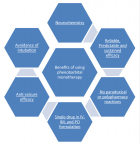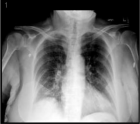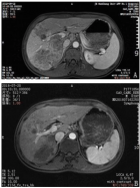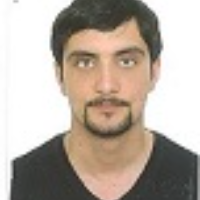Table of Contents
Biomechanical analysis of Sit-To-Walk movement in Parkinson’s patients
Published on: 27th April, 2018
Aim: The aim of this study was to evaluate the ankle-knee-hip interaction during sit-to-walk (STW) movement and clinical functional abilities of the lower limbs in Parkinson’s patients.
Methods: Twenty male patients, ages ranged from 55 to 70 years, stage ΙΙ & ΙΙΙ according to modified Hoehn and Yahr (1997) classification of disabilities and ten male healthy elderly subjects, ages ranged from 55 to 70 years, participated in this study. All subjects were assessed for; clinical functional abilities of the lower limbs, ground reaction force (GRF) & spatiotemporal data and range of motion (ROM) of hip, knee and ankle joints during STW movement.
Results: The results showed very significant differences in the GRF among the normal subjects and Parkinson’s patients during STW movement. There were significant differences in hip, knee and ankle joints ROM during STW. There were significant differences in spatiotemporal findings during STW movement. The Parkinson’s disease patients did not merge the two tasks of STW while the elderly subjects merged it. There was impairment in clinical functional abilities of the lower limbs in Parkinson’s patients.
Conclusion: A continuum of STW performance and clinical functional abilities whereby the healthy elderly people performed the task more efficiently than PD patients.
The short and mid-term effects of Mulligan concept in patients with chronic mechanical neck pain
Published on: 16th April, 2018
OCLC Number/Unique Identifier: 7547467716
Background: Mechanical chronic neck pain is very common musculoskeletal dysfunction among people, manifesting one or more pain-induced movements and disability impairments. Clinical guidelines suggest passive cervical mobilization and thoracic manipulation as manual therapy interventions. Mulligan concept has positive effect in patients with lumbar and thoracic spine mechanical chronic pain. Study objective was to investigate possible clinical effects of Mulligan techniques in patients with cervical pain according to pain and disability status.
Methods: forty participants diagnosed with mechanical chronic cervical pain, randomly assigned into experimental and control group. NAG, SNAG and self-SNAG joint mobilization in a nine-sessions protocol implemented to the study group, while SHAM-Mulligan techniques applied to control group. Self-reported questionnaires Numeric Pain Rating scale (NPRT) and Neck Disability Index (NDI) were used for the measurement of pain and disability levels respectively. Possible Interactions among Factors (TIME X GROUP) and simple effects in three-time measurements of pre, post and one-month follow-up concerning NDI and NPRS variables, were detected with Mixed-ANOVA test.
Results: Baseline scores of pain and disability resulted in no differences between groups. A significant Group and Time factors interaction founded and simple main effects analysis showed that Mulligan concept-group had significant improvement in post-intervention NPRT and NDI scores (p<.001), compared to baseline scores. Follow-up also differed compared to post-treatment score (p<.001). SHAM-Mulligan control group had no significant differences in dependent variables at any level of TIME factor (p>.001). Significant differences were found between groups according to second and third measurement phase (p<.001).
Conclusion: Our findings suggest that Mulligan concept techniques improve symptoms of pain and disability in chronic mechanical neck pain patients in short and mid-term effect level.
Summary: Mobilization techniques of SNAGs, NAGS and self-SNAGs reduces pain and improve function in patients with mechanical neck pain. Taken into consideration the safety and simplicity of application, future studies are encourage to examine the underline mechanism of action.
Physical Therapy for Transverse Myelitis: A Case Report
Published on: 8th January, 2018
OCLC Number/Unique Identifier: 7869157183
Background and Purpose: Transverse myelitis (TM) is a rare neurological diagnosis found in 1-4 per million people. Rehabilitation is recommended secondary to steroid treatment. There is limited clinical research on physical therapy (PT) for TM. The purpose of this case report is to present PT examination and management strategies for a patient with TM.
Case Description: A 25-year-old female patient diagnosed with TM was referred to PT. She presented foot drop causing ataxic gait, decreased sensation in bilateral lower extremities, significant fatigue, and low back pain. The patient required significant rest time between all tests and measures due to severely increased fatigue. PT plan of care was focused on therapeutic exercises per patient tolerance, passive range of motion (ROM) administered by the therapist, and gait training when activity tolerance was increased.
Outcomes: The patient was able to tolerate bouts of exercise as prescribed through home exercise program. She responded very well to passive ROM treatment during breaks between exercises to maintain ROM and decrease rigidity. Active ROM exercise was used to build activity tolerance while being mindful of limited ability due to fatigue. Upon increased activity tolerance, the patient was able to tolerate gait training with multiple breaks and maintain corrected gait when addressed during treatment.
Discussion: PT intervention was helpful for this patient with TM. Breaking down functional activities based on patient tolerance is important when treating people with TM. More experimental research is needed to support the benefits of PT for TM.
Effectiveness of Soft Tissue Mobilisation as an adjunct to the Conventional Therapy in patients with Ankylosing Spondylitis
Published on: 5th January, 2018
OCLC Number/Unique Identifier: 7869163621
Introduction: The HRMT (Human Resting Myofasial Tone) factor plays an important role to initiate the trigger the inflammation at the disease site in Ankylosing spondylitis (AS) as in all spondyloarthropathies. The incidence of fibromyalgia is higher in AS and a limiting factor to undergo the exercise program.
Aim of the study: To know the effectiveness of soft tissue mobilisation in patients with Ankylosing Spondylitis when it used as an adjuncts to the conventional exercises.
Methodology: 40 subjects were randomly assigned in to experimental and conventional group. Experimental group (n=20) received conventional exercises along with soft tissue mobilisation and the conventional group (n=20) received only conventional exercises (flexibility exercises, aerobic exercise and breathing exercise) for a period of 4 weeks, 5days/week.
Results: The result of the study showed that both the conventional and experimental groups improved significantly in stiffness, pain and physical function aspects after treatment. However the experimental group had a greater change as compared to conventional group.
Conclusion: The study demonstrates that soft tissue mobilisation has an effect when it used before the conventional exercise in patients with ankylosing spondylitis.

If you are already a member of our network and need to keep track of any developments regarding a question you have already submitted, click "take me to my Query."

















































































































































